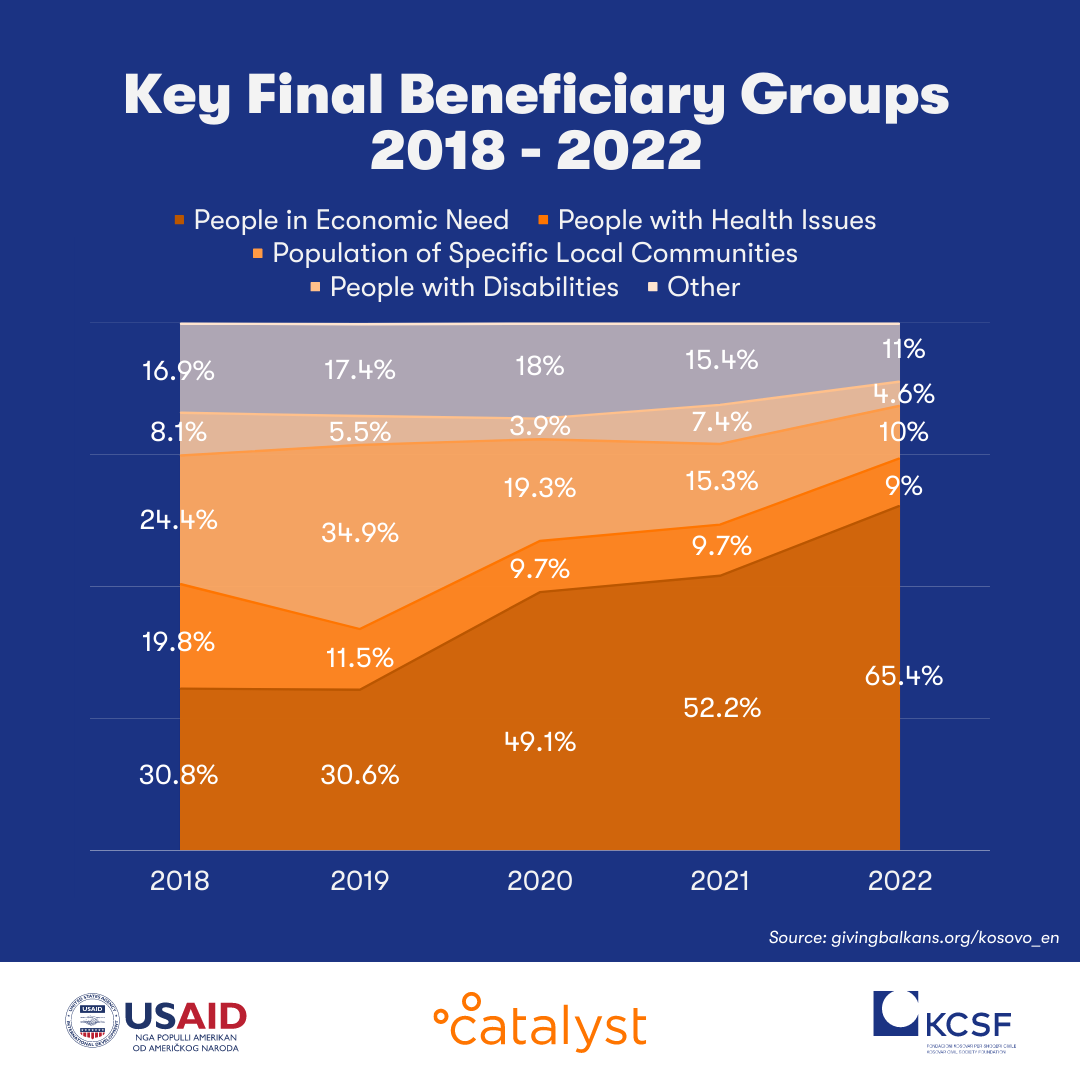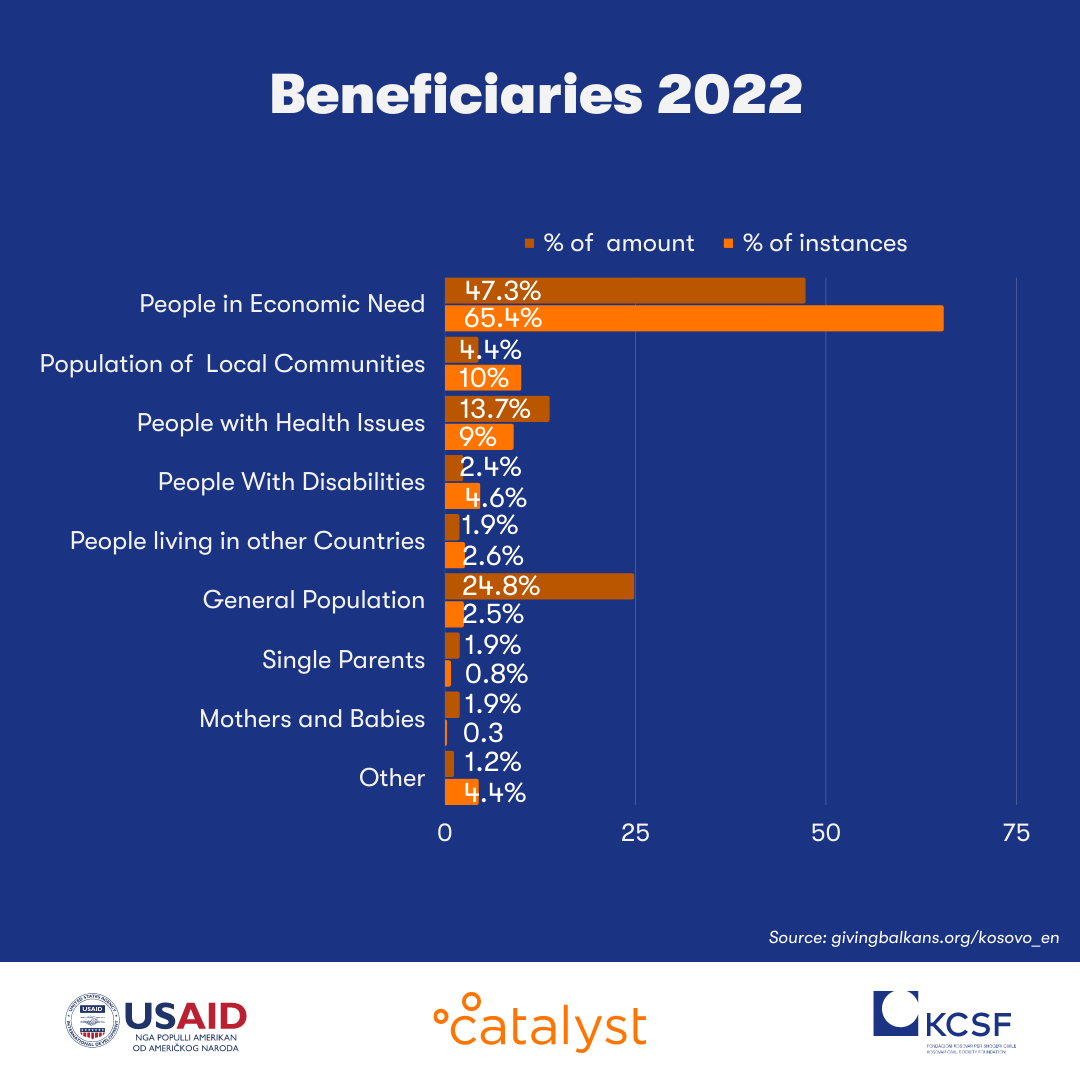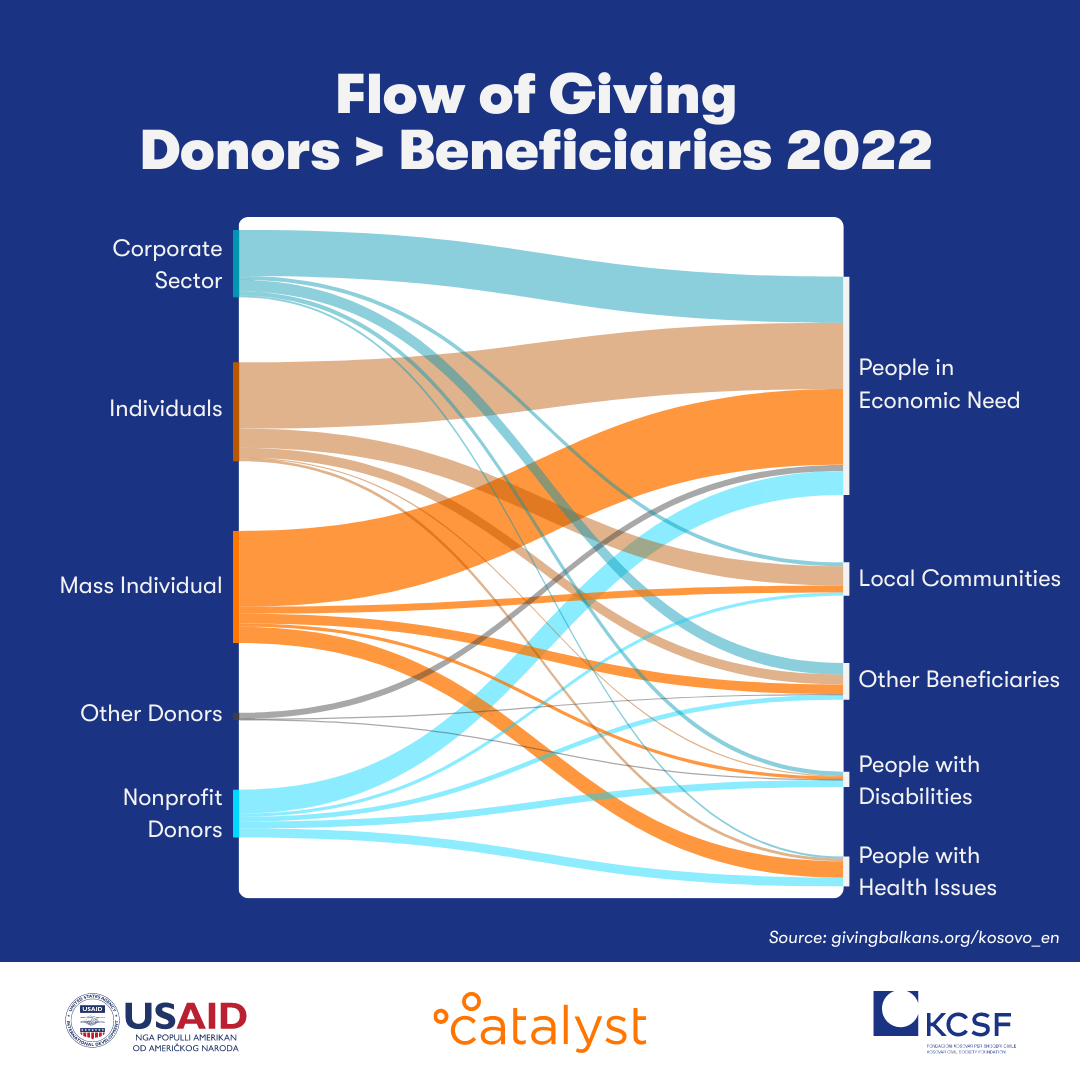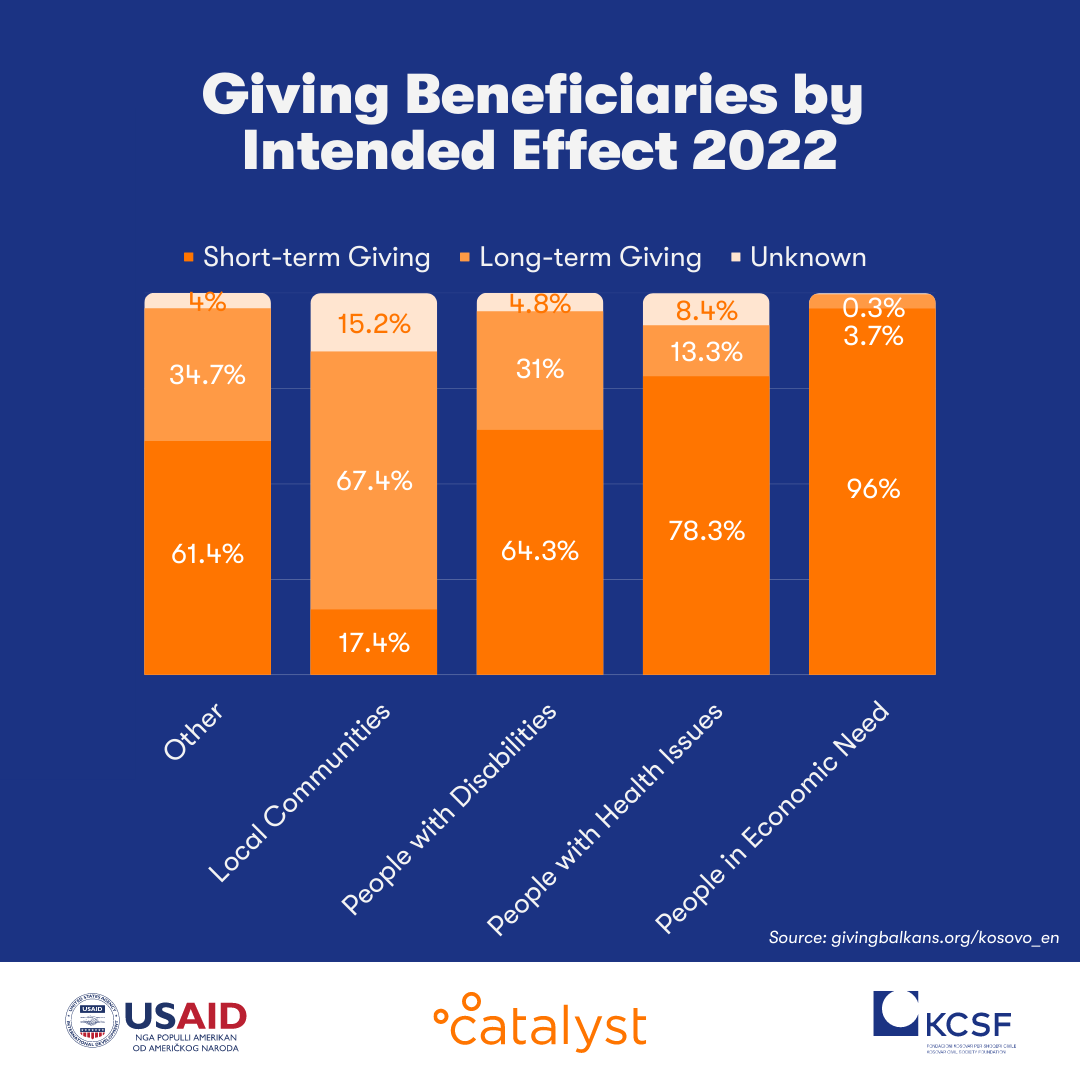Trends in Beneficiary Groups of Giving in Kosovo – 2018-2022

Key Final Beneficiary Groups 2018 - 2022 - download the infographic in PDF
Beneficiary Groups Receiving Support from Domestic Giving in 2022
In 2022, 65.4% of all instances (and 47.3% of the amount) in Kosovo were directed toward people in economic need. These higher levels of giving for the benefit of this particular group of people represent the continuation of a trend that started in 2020. It also corresponds to the socio-economic trends and higher food insecurity and inflation occurring in Kosovo over the same period of time.
Other key beneficiary groups in 2022 include the population of specific local communities (10% of donation instances and 4.4% of donated amount) who have benefitted from community-based improvements that impact the local environment and people with health issues (9.0% of instances and 13.7% of donated amount).
Notably, while the frequency of donation instances focused on the general population of Kosovo in 2022 was at 2.5%, the donated amount of giving was 24.8% of overall giving; this is due to the giving done in 2022 in support of the Kosovo Security Fund.

Beneficiaries 2022 - download the infographic in PDF
How Beneficiary Groups are Supported by Various Types of Donors
Mass individual giving was the primary source of giving for people in economic need and people with health issues. Mass individual campaigns were the source of funds in more than half of all donation instances for people with health issues and more than a third for people in economic need.
Known individuals were the donors in 57.6% of all actions intended for the population of specific local services. Predominantly, these actions included donations of scholarships from diaspora donors that were earmarked for students from particular towns or communities.

Flow of Giving Donors > Beneficiaries - download the infographic in PDF
Intended Effects of Giving for Key Final Beneficiary Groups
Examining how funds given were used provides insight into whether a particular donation would have a short-term impact to address the symptoms of a problem or a more strategic impact to address the root problem.
In 2022, 96% of the resources dedicated to supporting people in economic need were used to address their felt needs and provide humanitarian assistance, food support, or other short-term inputs that would temporarily address the problem. More than 78% of funds directed towards people with health issues were for short-term solutions, with only 13% of funds used to create long-term health and wellness outcomes.
Strategic forms of giving were more frequent in donations that supported people with disabilities (31% of instances had strategic intent) and especially so when the population from a specific local community (67.4% of instances) benefitted from a donation.

Beneficiaries by Intended Effect in 2022 - download the infographic in PDF
Examples of Giving
Support for the women and girls from the Roma, Ashkali, and Egyptian communities
The Sakuntala NGO successfully raised EUR 850 through a KOSOVA Ideas crowdfunding platform campaign to provide vocational training to women and girls from the Roma, Ashkali, and Egyptian communities. The five-month training was organized by the Yunus Emre Institute in Prizren, aiming to improve the economic development of Roma women and girls in the municipality of Prizren and promote traditional handicrafts.
#EcPërMua (#WalkForMe)
In June 2022, using the hashtag #EcPërMua (#WalkForMe), the SOS Fshatrat e Fëmijëve Kosovë Association organized the regional campaign #IT4SOS in cooperation with the Association for Information and Communication Technology of Kosovo. The aim of the action was to raise funds for the support of children without parental care. Various companies, such as Raiffeisen Bank, NLB Banka, ProCredit Bank, 3CIS JSC, Appstellar, and Global CT Digital Kosovo, responded to the initiative. The total amount raised was EUR 12,500.
Donation of 100 computers
The Naim Fasheri LAPSH diaspora association in Switzerland donated 100 computers along with needed accessories to the SHFMU “Vëllezërit Frashëri” in Lipjan. The donation was worth EUR 30,000.
More on the state of philanthropy in Kosovo in 2022:
- Giving Kosovo 2022: Report on the State of Philanthropy
- Infographic: Who Benefits from the Support?
- Kosovo's Giving Trends in 2022: A Spotlight on Poverty Relief and Healthcare Donations
- Shifts in Kosovo's Philanthropy: Recipient Trends and Giving Flows in 2022
- Kosovo's 2022 Donor Landscape: A Deep Dive into Individual, Corporate, and Diaspora Giving
- Understanding the Intended Effects of Philanthropic Giving in Kosovo: Short-Term vs. Long-Term in 2022
This report is made possible by the generous support of the American people through the United States Agency for International Development (USAID). The contents are the responsibility of Catalyst Balkans and do not necessarily reflect the views of USAID or the United States Government.
The Citizen Engagement Activity in Kosovo is a five-year initiative implemented by Kosovar Civil Society Foundation (KCSF) in partnership with the United States Agency for International Development (USAID).
Cover photo: pexels.com


Leave a comment